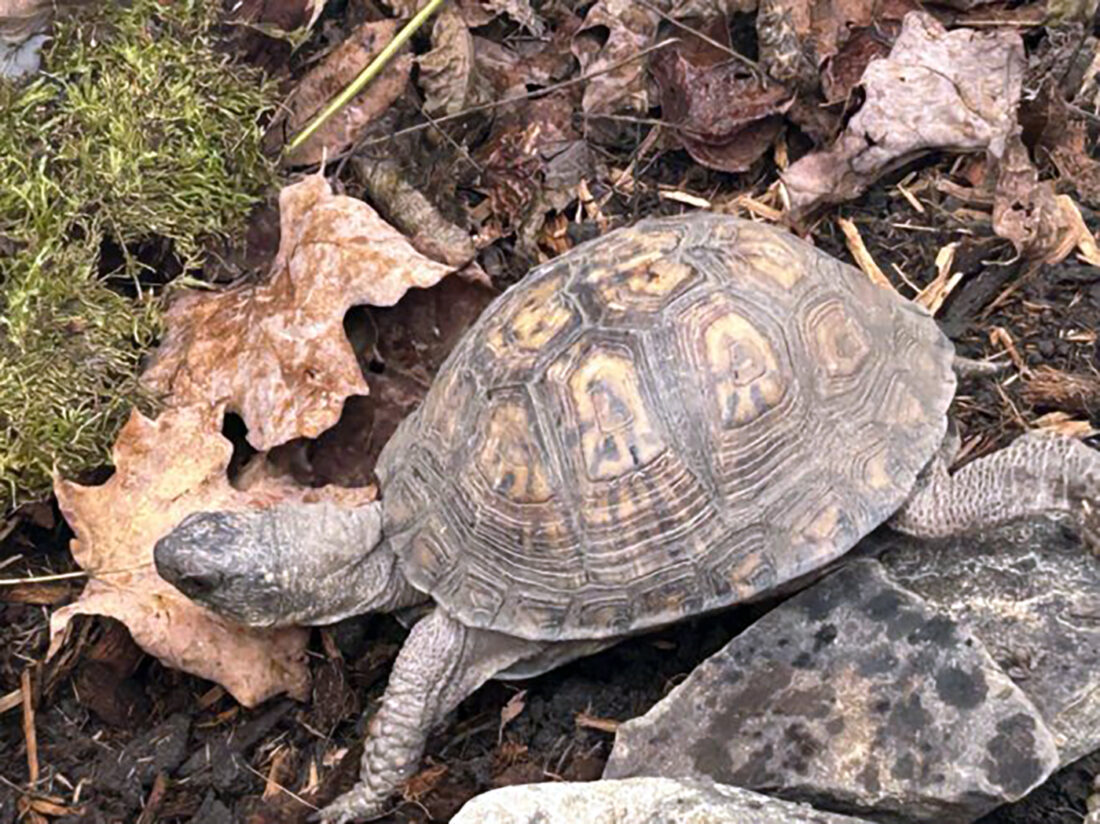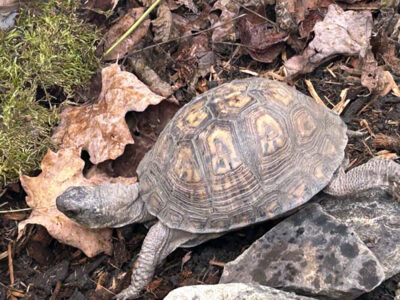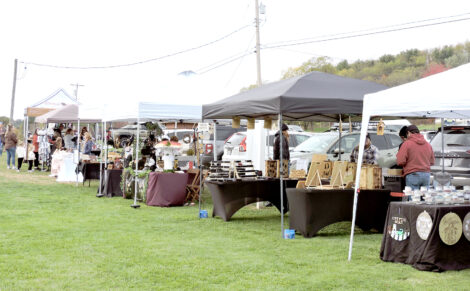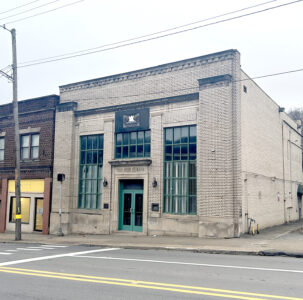WLU aquatic center now open

NOW OPEN — A spotted turtle enjoys his new home as West Liberty University opened its new Appalachian Aquatic Conservation Center on campus. Propagation of turtles and crayfish will be a major function at the new facility. -- Joselyn King
WHEELING — West Liberty University wants to be the top university in the nation for the study and conservation of crayfish and spotted turtles while attracting additional students to “The Hilltop.”
School officials were joined Thursday by many students and supporters for the ribbon cutting for the Appalachian Aquatic Conservation Center on campus.
WLU is now one of four universities across the nation to have an aquatic conservation facility. The next closest is Virginia Tech, also in the Mid-Atlantic region, according to Zachary Loughman, chairman of organismal biology, ecology and zoo science departments at WLU.
Loughman spearheaded the aquatic conservation center project.
The main building at the conservation center was previously the site of the Road Worthy Restaurant and Tavern across from the WLU campus. When the property came up for auction in 2013, philanthropists Phyllis “Flip” and Gary West purchased it and donated it to West Liberty University. It was initially used as a special events space.
Ground for the aquatic conservation center reconstruction was broken in August 2023. A second structure to serve as a propagation building for crayfish and spotted turtles was also constructed.
Construction was funded through a federal grant WLU obtained from the Abandoned Mine Lands Pilot Program.
The project was expected to cost $1.5 million. But higher costs for materials after COVID added another $500,000, making it a $2 million project, according to Loughman.
Zachary Loughman, chairman of organismal biology, ecology and zoo science departments at WLU, addresses those attending the ribbon cutting Thursday for the new Appalachian Aquatic Conservation Center on campus.
But he knew if he were able to achieve the construction of the aquatic conservation center, the end result would allow him to do two things very important to him.
“We would be able to conserve underappreciated wildlife,” he continued. “At the same time, I would be able to teach students conservation by doing conservation,” he said.
“We didn’t have the ability to do this before to the extent I would have liked us to, and this gives us the ability to do it.”
A second building was constructed on the property to house the propagation of spotted turtles and crayfish.
“We will get eggs to hatch, and get the babies going after they hatch to where they are nice and robust and strong and able to go out into the wild,” Loughman explained. “We will release them to augment wild populations. That’s really important, because with imperiled species often the young are being eliminated because of invasive species or animals in their environment.
“By giving them a head start, it just makes them bigger and stronger when starting life in the wild.”
The center contains state-of-the-art classrooms where staff can foster both educational relationships and community outreach, he added.
“West Liberty really doesn’t have a space that can be loaned out if there is a talk or community meeting,” Loughman added. “This enables us to reach out to the community.”
He acknowledged sometimes conservation is “great for the animals, but not so great for the community” when municipalities want to do infrastructure improvements and can’t because of dangers to specific species present.
Loughman said his department — when notified of such issues — can go in and capture endangered turtles and crayfish and bring them back to West Liberty for nurturing. After the construction threat is complete, the species are returned to their original home.
“What I want people in the area to realize is that West Liberty University is a leader in animal conservation,” Loughman continued. “Our zoo science major and ecology majors are top notch.
“We have just as much if not more in facilities than others in West Virginia. And we have all kinds of students coming from out-of-state to get their degree here to become conservation biologists. If you are a young person and you want to do conservation, you can do that here.”
The zoo science major at WLU has various tracks within it — animal management, applied conservation. An aquarian sciences track is now offered on campus due to the enhanced facilities.
“People will want to jump all over that,” Loughman said. “If you want to work in aquariums, this facility was built with that in mind.”
WLU President Tim Borchers said the new programs and facility will mean a positive transition for the campus.
“They (students) will get experience while learning and working with animals in this space,” he said. “It will definitely attract students, and a lot of opportunities for us for fundraising.”
Karen Kettler, dean of the WLU College of Sciences, said the school wanted to build a facility where students could learn by doing real conservation work.
Many of the zoo science majors attended the ribbon cutting ceremony on Thursday, and Kettler added there already has been hands-on learning happening as students were involved with building out the labs and classrooms in the building.
“Students learn by doing, and contributing to something bigger than themselves,” she said. “Student fingerprints are all over this place. They designed these enclosures, and then they built them.”
A few weeks back, the students were even involved with the rebuilding of a fence behind the center after it was discovered that neighboring baby cows had invaded the property, Kettler said.



